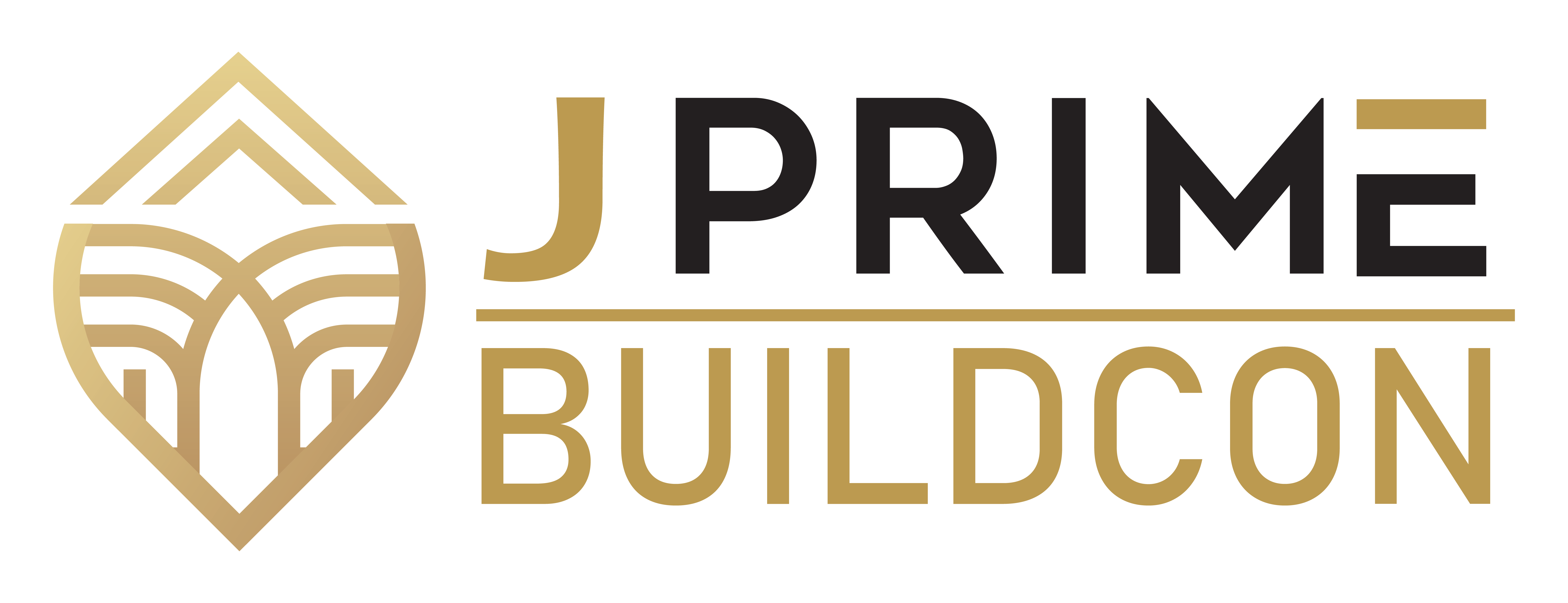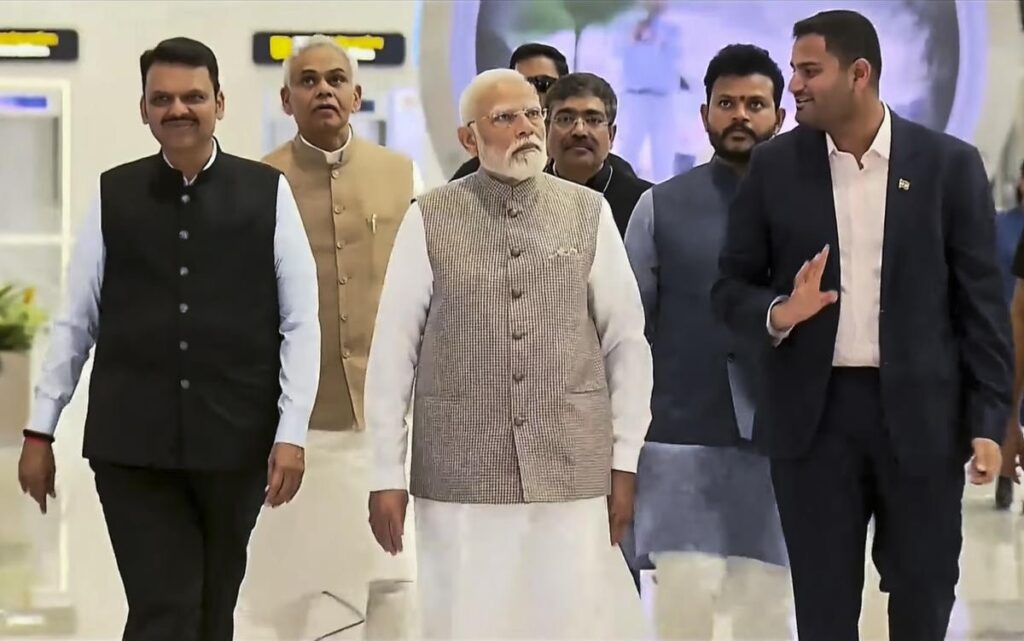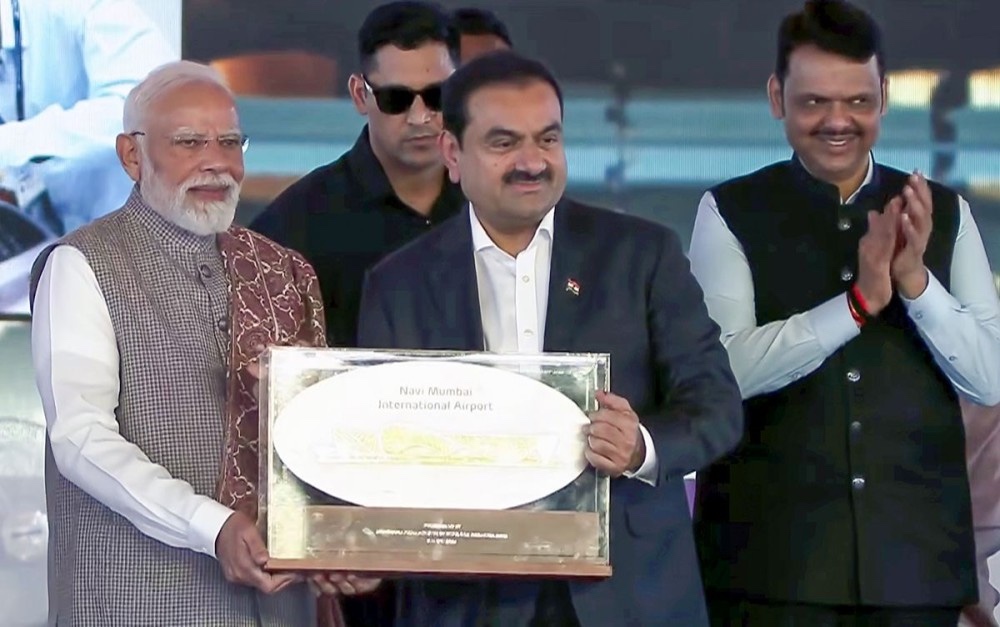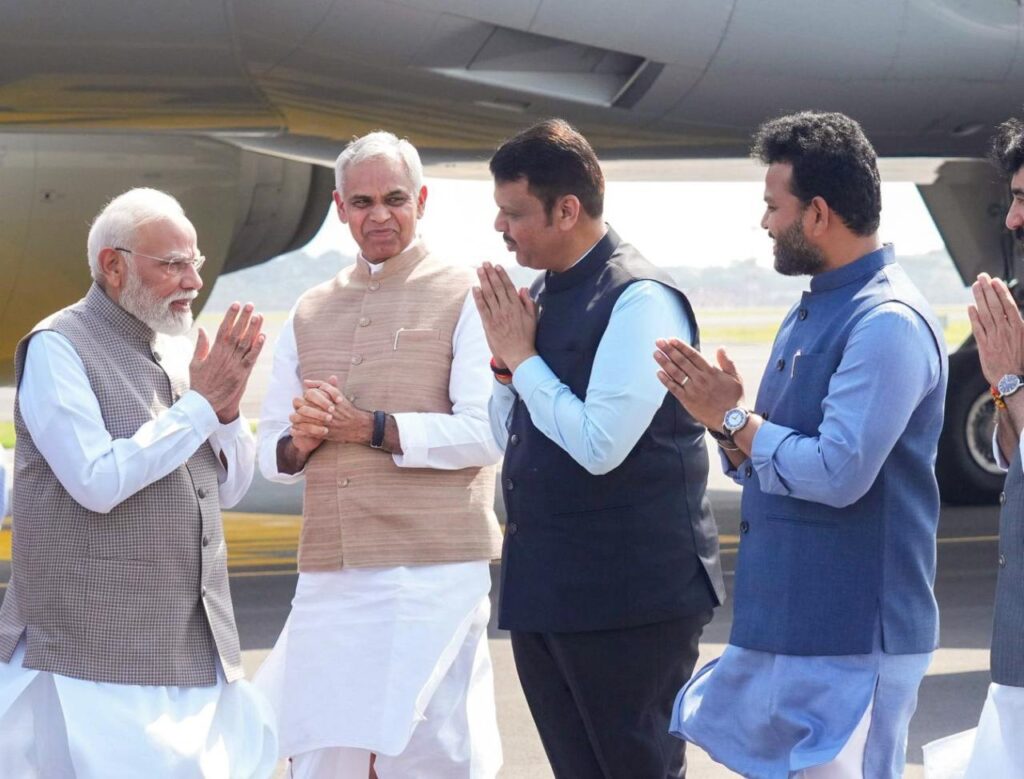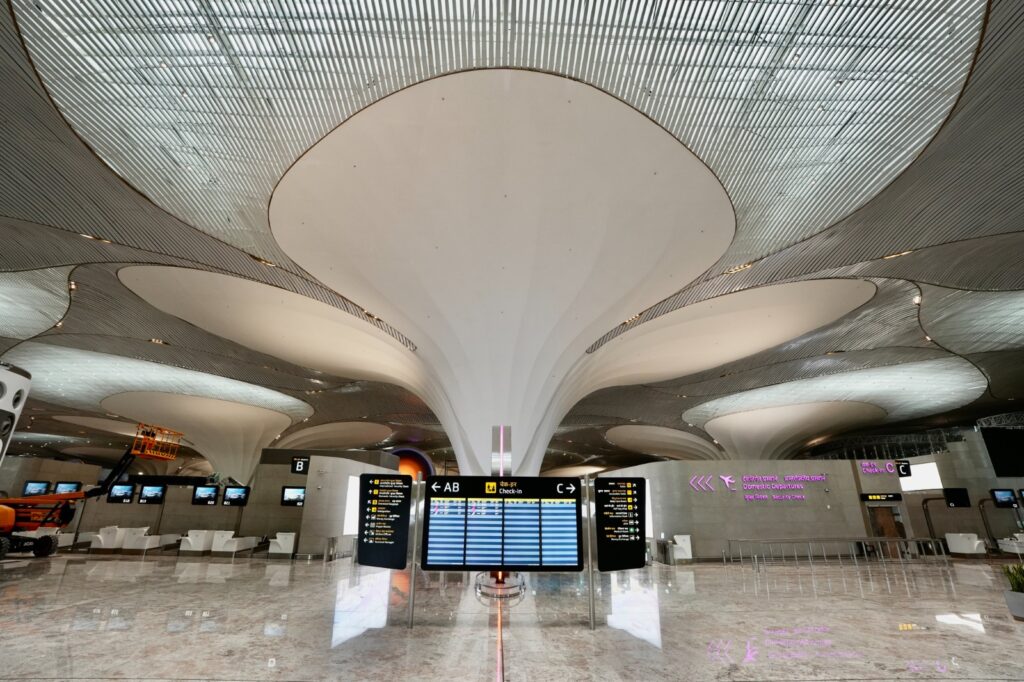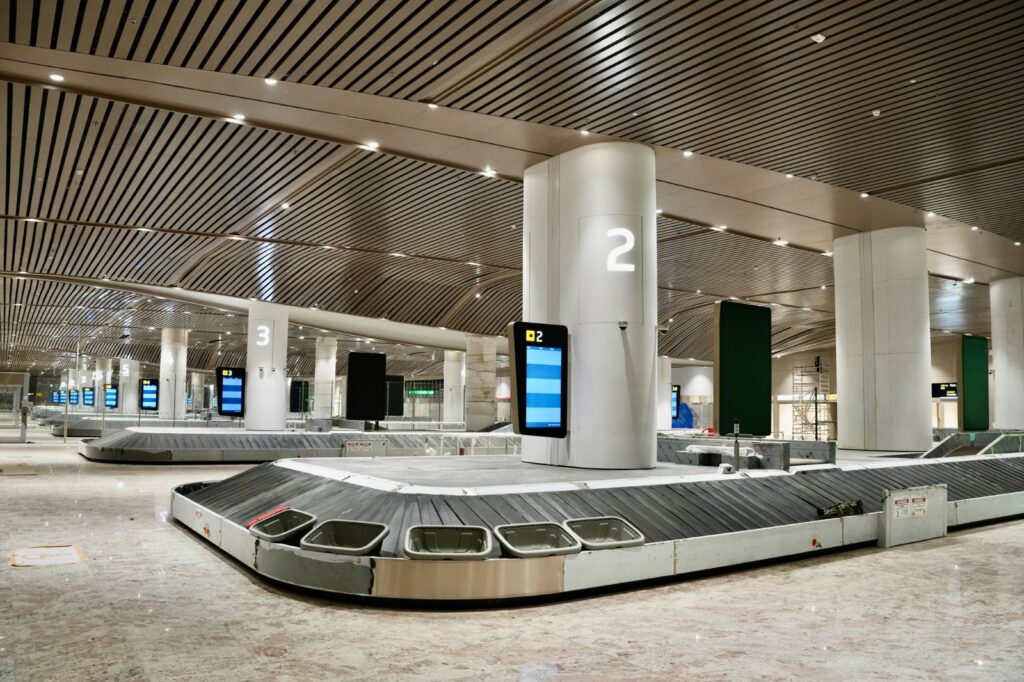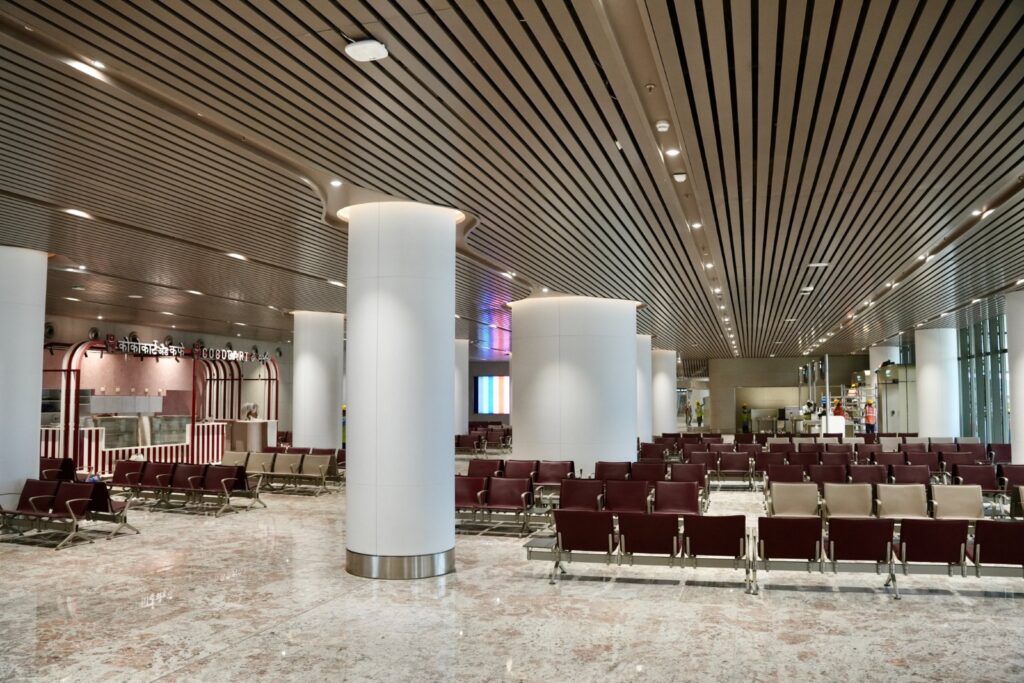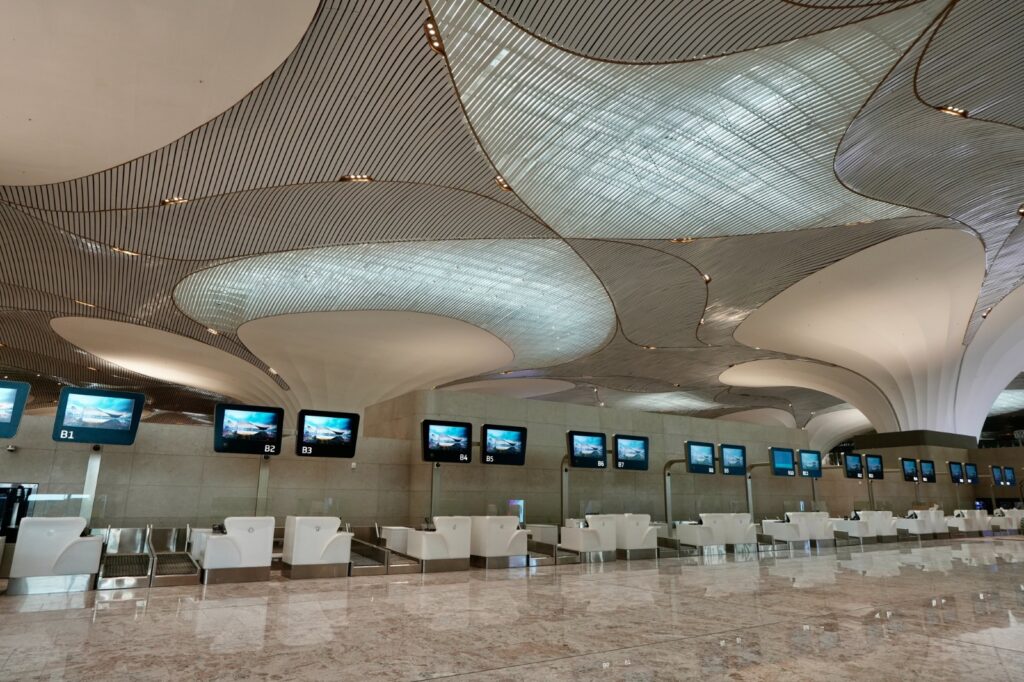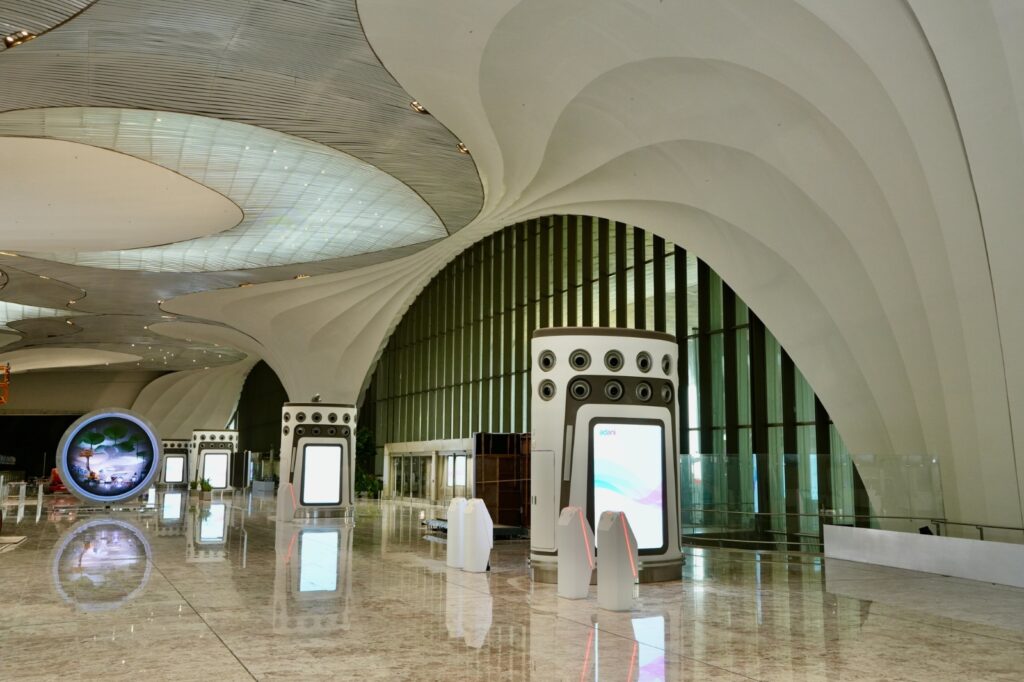On 8 October 2025, Prime Minister Shri Narendra Modi inaugurated Phase 1 of the Navi Mumbai International Airport (NMIA) — a moment that will be remembered as a turning point in the Mumbai Metropolitan Region’s journey toward world-class infrastructure.
The event was graced by dignitaries including Shri Devendra Fadnavis (CM, Maharashtra), Shri Eknath Shinde (Dy CM, Maharashtra), Shri Ajit Pawar (Dy CM, Maharashtra), Union Ministers Shri Ramdas Athawale and Shri Ram Mohan Naidu Kinjarapu, Shri Murlidhar Mohol, Governor Shri Acharya Devvrat, Mr. Keiichi Ono (Ambassador of Japan), and senior officials from CIDCO and the airport consortium.
I was privileged to witness this historic event, feeling the weight of history and imagining how this new airport will reshape Navi Mumbai, Pushpak Nagar, and the entire region. In this article, I share what makes NMIA special, its connectivity blueprint, regional transformation, JPrime Buildcon’s role, my reflections, and how our vision aligns with Mr. Avinash Jagdale’s goals. I also extend heartfelt thanks to the Government of India, the State of Maharashtra, and CIDCO for making this dream a reality.
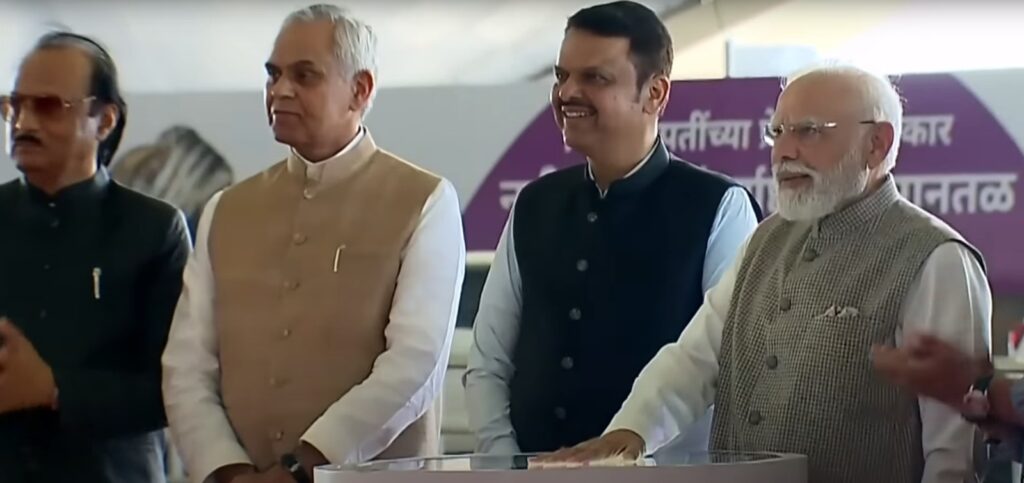
1. What Makes NMIA Truly Special
Scale & Vision: NMIA is a greenfield airport built on approximately 1,160 hectares in the Ulwe/Panvel region. Phase 1 cost around ₹19,650 crore and was developed under a public–private partnership between Adani Airports Holdings Ltd. (74%) and CIDCO (26%). Initially, it will handle 20 million passengers annually, with future capacity projected to reach 90 million passengers, alongside significant cargo throughput.
Design, Technology & Sustainability: Inspired by the lotus flower, the terminal features 12 sculptural columns symbolizing petals and 17 mega-columns supporting the roof. Passenger conveniences include 66 check-in counters, 29 aerobridges, 22 self-bag drop counters, 10 bus-boarding gates, and plans for automated cargo handling. NMIA aims to integrate multimodal connectivity — road, rail/metro, water taxi, and Automated People Mover (APM) systems. Sustainable features include solar power, EV buses, and efficient resource management, making it one of India’s most modern airports.
Strategic Importance: Mumbai now joins a rare global league of metros with two international airports, enabling better load balancing, reducing delays at CSMIA, and enhancing cargo access for industries, farmers, and exporters. NMIA aligns with the vision of “Viksit Bharat”, showcasing India’s capability in mega infrastructure.
2. Transportation & Connectivity
NMIA’s success hinges on seamless connectivity:
Road Access: Key links include Sion–Panvel Highway, NH-4B, Mumbai Trans Harbour Link (MTHL), and the Ulwe Coastal Road. Feeder roads, expressways, and elevated corridors are being planned to manage traffic efficiently.
Rail/Metro/Mass Transit: Navi Mumbai Metro Line 1 is operational, connecting Belapur to Pendhar. Metro Line 8 (Gold Line) is proposed to link NMIA directly with CSMIA and other parts of Mumbai. Integration with the suburban railway network and the APM system will further enhance accessibility.
Water Taxi & Innovative Modes: The airport plans include water taxis leveraging nearby waterways and EV buses for last-mile connectivity, ensuring NMIA becomes an integrated part of Navi Mumbai’s mobility fabric.
3. Transformation of Navi Mumbai & Pushpak Nagar
NMIA is a catalyst for regional transformation:
- Surrounding nodes such as Pushpak Nagar, Ulwe, Panvel, and Taloja are expected to evolve into economic growth corridors, attracting residential, commercial, logistics, hospitality, and retail development.
- Infrastructure upgrades in roads, utilities, and civic services will follow.
- Employment opportunities will increase directly (airport operations) and indirectly (supply chains, transport, retail).
- Real estate demand and property valuations are expected to rise significantly.
Pushpak Nagar: With its proximity to the airport corridor, Pushpak Nagar is poised to benefit immediately. Residents will enjoy shorter commutes and easy access to connectivity hubs. JPrime Buildcon’s projects here offer homes with location and long-term potential, ensuring that residents benefit from both lifestyle and investment opportunities.
4. JPrime Buildcon: Proud Stakeholder in the Vision
At JPrime Buildcon, we consider ourselves partners in progress. Developing projects in Pushpak Nagar allows us to witness firsthand how connectivity and infrastructure amplify value, with NMIA providing strategic context.
Being part of this transformation is both a privilege and responsibility.
As NMIA comes alive, our developments gain monetary and strategic value — homes become gateways, not just dwellings. We commit to quality, sustainability, timely delivery, and community orientation, contributing meaningfully to Navi Mumbai’s growth story.
5. Reflections from the Inauguration
Standing in the grand terminal among national leaders and planners, I felt:
- Awe — at the ambition, engineering, and design behind NMIA.
- Pride — in belonging to a city stepping into a new era.
- Hope — for families and communities benefiting from improved connectivity.
- Responsibility — to deliver projects that meet long-term community needs.
- Gratitude — to everyone who made this possible.
Attending this event reinforced my belief that infrastructure is more than steel and concrete — it enables dreams, mobility, and upliftment.
6. JPrime Buildcon Vision & Mr. Avinash Jagdale’s Goals
JPrime Vision:
- Deliver affordable, high-quality homes in growth corridors like Pushpak Nagar.
- Build sustainable, green developments with modern amenities.
- Foster community-centric living with parks, social spaces, and resilient infrastructure.
- Align projects with transformational initiatives like NMIA.
- Establish a legacy of trust, transparency, and on-time delivery.
Mr. Avinash Jagdale’s Goals:
- Pioneer developments near future infrastructure landmarks.
- Elevate standards in design, execution, and sustainability.
- Promote inclusive growth, benefiting broad segments of society.
- Commit to responsible, conscious development respecting communities and ecology.
- Ensure long-term structural, social, and environmental legacy.
- NMIA perfectly aligns with this vision. Our projects in Pushpak Nagar will become strategic assets in Navi Mumbai’s evolving infrastructure landscape.
Acknowledgments & Gratitude
Heartfelt thanks to:
- Government of India — Prime Minister’s Office, Ministry of Civil Aviation, and central agencies.
- State Government of Maharashtra — CM Shri Devendra Fadnavis, Dy CMs Shri Eknath Shinde & Shri Ajit Pawar, and supporting departments.
- CIDCO, led by Shri Vijay Singhal, for planning, coordination, and execution.
- Engineers, architects, contractors, laborers, planners, and community stakeholders — whose efforts made this historic day possible.
This achievement is collective, reflecting vision, collaboration, and dedication.
Final Thoughts
The inauguration of Navi Mumbai International Airport by Shri Narendra Modi, alongside eminent leaders, is more than a ceremony — it signals a new phase of growth, connectivity, and opportunity for Mumbai and Navi Mumbai.
For Pushpak Nagar, JPrime Buildcon, and me personally, this is a defining moment. NMIA is not just infrastructure; it is a backbone of opportunity, progress, and transformation. I am proud to have witnessed it, honored to contribute, and committed to ensuring that every project we deliver upholds the promise of this new era.
“The airport is a gateway to the world, and our mission is to ensure the region it serves grows responsibly, sustainably, and inclusively.” — Mr. Avinash Jagdale, Founder & MD, JPrime Buildcon

